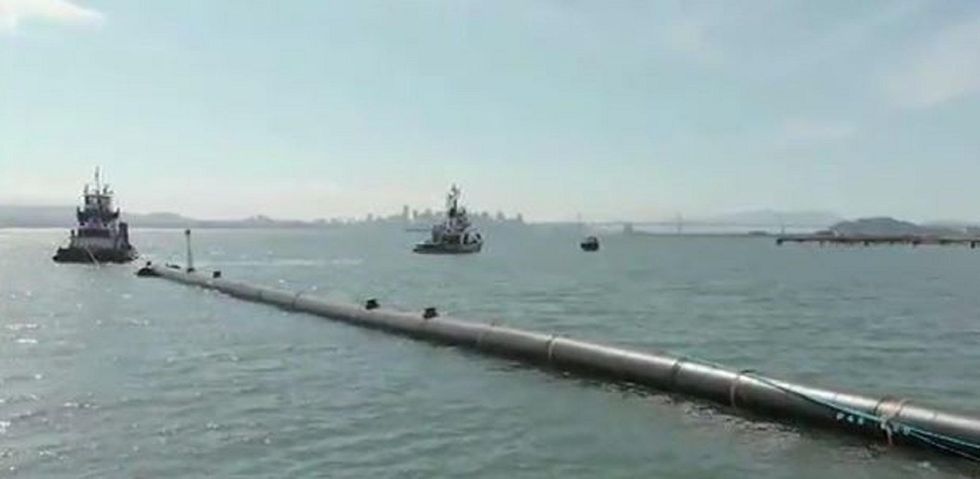
A 2,000-foot-long trash collection device was deployed from San Francisco Bay over the weekend, and is the world's first ocean cleaning system. (Image source: Video screenshot)

A nonprofit group launched a giant ocean clean-up system over the weekend, in hopes of tackling a massive accumulation of trash in the Pacific Ocean.
The Ocean Cleanup project was founded in 2013 by then-18-year-old Dutch inventor Boyan Slat. The project has the ambitious goal of reducing the Great Pacific Garbage Patch within five years, using unmanned floating booms designed to gobble up litter "like Pac-Man," according to the group's website.
On Saturday, the first 2,000-foot floating vessel was deployed for a two-week test from San Francisco Bay. It's intended to act as a coastline of sorts, corralling garbage with its U-shaped design. If successful, the boom will be moved to the Garbage Patch located between California and Hawaii.
The Ocean Cleanup project hopes to build more of the trash collection systems, eventually developing a fleet of 60.
Roughly 80 engineers and researchers work for the Netherlands-based firm, which has raised nearly $35 million for their project so far. It's the world's first ocean cleaning system, but Slat admits he's not sure if it will work yet.
In a Facebook video posted last week, the CEO said his greatest concern is whether or not the new system can actually collect garbage.
"To me this is where I think my largest anxiety lies at this point in time," he said. "First of all, it's something that we haven't really been able to test very well."
George Leonard, chief scientist at the Ocean Conservancy, expressed concern about whether the system could actually do harm.
"There's worry that you can't remove plastic without removing marine life at the same time," he told the New York Times. "We know from the fishing industry if you put any sort of structure in the open ocean, it acts as a fish-aggregating device."
The Great Pacific Garbage Patch is estimated to be bigger than the state of Texas, and is the world's largest floating accumulation of trash.
National Geographic reported earlier this year that microplastics only make up roughly 8 percent of the patch's total tonnage, and scientists believe that the mass is comprised mostly of fishing gear like nets and traps.
But there is an estimated 1.8 trillion pieces of plastic in the patch, and Slat is determined to gather it up and keep more from accumulating.
"We need to deal with new plastic and prevent more plastic from entering the ocean," he told KTVU-TV, "There is this legacy of 60 years of pollution that has already been done. It doesn't go away by itself."